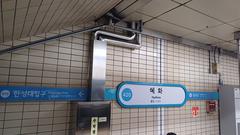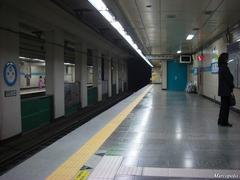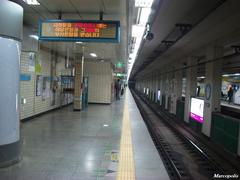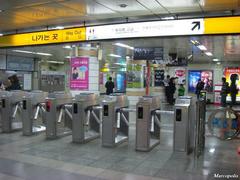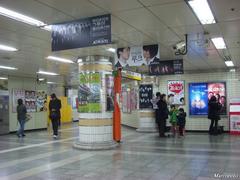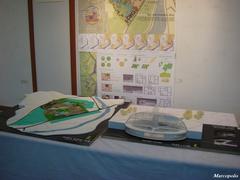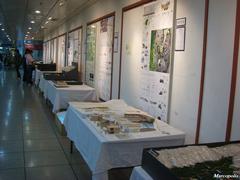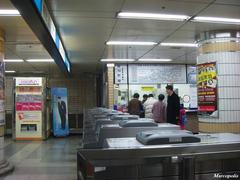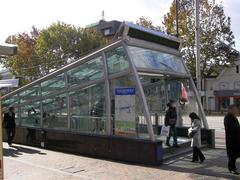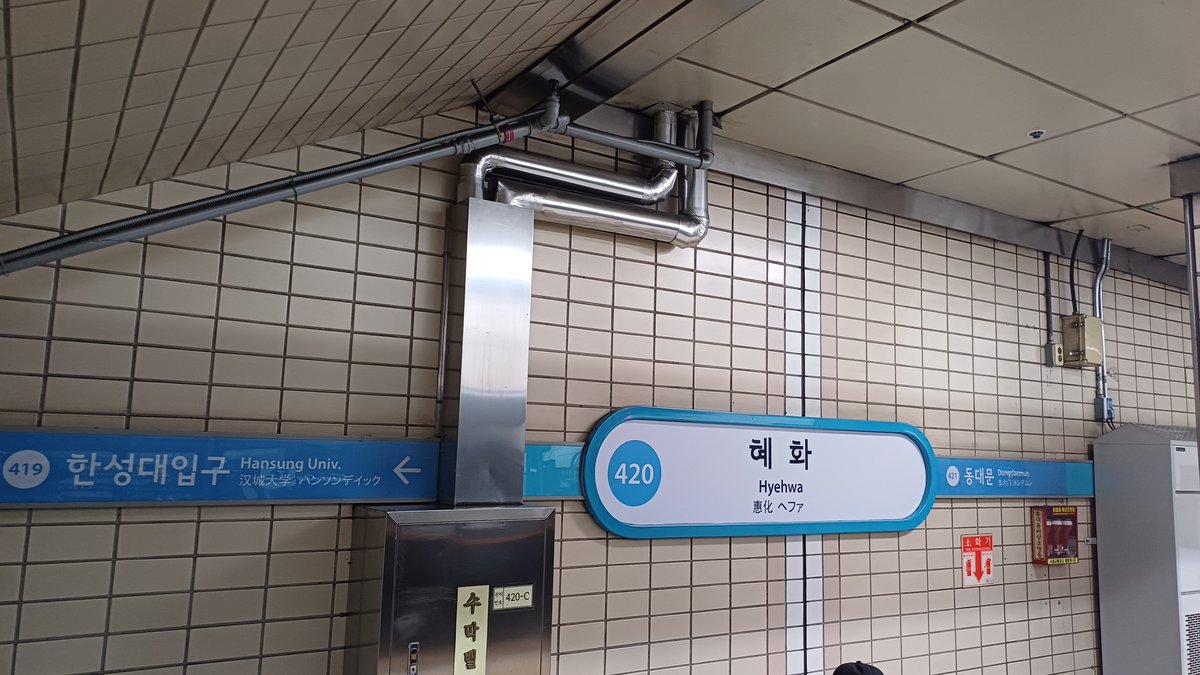
Hyehwa Station Seoul: Visiting Hours, Tickets, and Nearby Attractions Guide
Date: 15/06/2025
Introduction
Located in the heart of Seoul’s Jongno-gu district, Hyehwa Station is more than just a subway stop—it is the vibrant gateway to Daehangno, a neighborhood celebrated for its historical significance, creative energy, and multicultural spirit. As the center of Seoul’s renowned theater district and a launching point to landmarks like Naksan Park, Ihwa Mural Village, and Hyehwamun Gate, Hyehwa invites visitors to discover a seamless blend of tradition, contemporary art, and urban vitality. This guide provides a detailed overview of the area’s history, cultural importance, essential visitor information, and the best nearby attractions, ensuring a smooth and enriching travel experience. Whether you are drawn by Daehangno’s dynamic performance scene, the colorful murals of Ihwa Village, or the historic charm of Seoul’s fortress walls, Hyehwa is a must-visit for anyone seeking an immersive Seoul adventure (Klook; Visit Korea; The Soul of Seoul).
Table of Contents
- Introduction
- Historical Background
- Visiting Hyehwa: Essential Information
- Visitor Tips
- Preservation & Community Engagement
- Frequently Asked Questions (FAQ)
- Conclusion
- References
Historical Background
Origins and Development
Hyehwa’s roots trace back to the Joseon Dynasty, when the wider Jongno area served as a hub for education, government, and royal affairs. The very name “Hyehwa”—meaning “benefit” and “flower”—reflects the area’s longstanding aspirations for growth and cultural flourishing. With its proximity to the Seoul Fortress Wall and Naksan Mountain, Hyehwa has played a vital role in the city’s urban and defensive history (Klook).
Cultural and Educational Emergence
The mid-20th century saw Hyehwa and Daehangno emerge as Seoul’s academic and cultural nucleus. The establishment of Seoul National University’s campus in the area catalyzed an influx of students, intellectuals, and artists. Even after the university relocated, Daehangno retained its reputation as the “theater district,” now hosting over 80 independent theaters—a legacy that fuels its ongoing creative renaissance (Mims on the Move). The opening of Hyehwa Station on Line 4 in 1985 further accelerated this development, making the area highly accessible and popular among locals and tourists alike.
Urban Revitalization & Ihwa Mural Village
By the 2000s, aging infrastructure and depopulation threatened some of Hyehwa’s neighborhoods. The 2006 “Art in City Project,” spearheaded by the Ministry of Culture, Sports and Tourism, transformed Ihwa-dong into the now-famous Ihwa Mural Village. Over 70 artists collaborated with residents to decorate walls, stairways, and alleyways with vibrant murals and installations, revitalizing the area and preserving its character (The Soul of Seoul; Klook). While tourism has boosted the local economy, it also brought challenges; in 2016, some popular murals were removed in response to resident concerns regarding noise and privacy (KoreaToDo).
Landmark Heritage
Hyehwa’s cultural landscape is defined by its proximity to several key sites:
- Naksan Park & Seoul Fortress Wall: This park, adjacent to Ihwa Mural Village, features a preserved section of the ancient wall, offering panoramic city views and a tangible link to Seoul’s medieval roots (The Soul of Seoul).
- Marronnier Park: Formerly the site of Seoul National University, today it is a vibrant plaza hosting free concerts, street performances, and community events (Mims on the Move).
- Live Well Academy Museum: Located in Ihwa Mural Village, this site honors a local educational institution that served underprivileged youth, preserving the neighborhood’s social history (The Soul of Seoul).
Visiting Hyehwa: Essential Information
Getting There
Hyehwa Station is on Seoul Subway Line 4. Exit 2 brings you directly to Daehangno’s theater row, while Exits 1 and 4 provide easy access to other major landmarks. Transfers from Seoul Station or Dongdaemun are straightforward.
Visiting Hours & Tickets
- Hyehwa Station: Open daily, 5:30 AM–midnight; entry requires standard subway fare or T-money card (Seoul Metro Official Site).
- Ihwa Mural Village: Open 24/7; no entrance fee.
- Naksan Park: Open 5:00 AM–10:00 PM; free entry.
- Marronnier Park: Open year-round, free admission.
- Live Well Academy Museum: Check local event listings for opening times.
Accessibility
Hyehwa Station features elevators, ramps, and tactile paving. While most public areas are accessible, some mural alleys and park trails may be steep or include stairs.
Recommended Duration
Allocate at least half a day (3–4 hours) to enjoy the key attractions, including walking tours, performances, and park visits.
Nearby Attractions
- Changdeokgung Palace: UNESCO World Heritage site, easily reached by bus or taxi.
- Dongdaemun Design Plaza: Iconic modern landmark for shopping and exhibitions.
- Seongbukcheon Stream: Serene walking paths a short stroll from Exit 2.
- Ikseon-dong Hanok Village: Traditional architecture, unique shops, and cafes (Walk into Korea).
Tours & Special Events
Guided walking tours of Daehangno’s theaters, mural village, and historical sites are widely available. Marronnier Park and Daehangno host festivals, farmers markets, and street performances, especially on weekends (Guide to Korea; Thrillist).
Visitor Tips
- Visit on weekdays or early mornings to avoid crowds.
- Respect residents’ privacy, keep noise down, and refrain from littering.
- Wear comfortable shoes for exploring hilly and stair-filled areas.
- Utilize public transit; parking is scarce.
- Consider using apps like Subway Korea or KakaoMap for navigation.
Preservation & Community Engagement
Hyehwa’s community-led revitalization efforts are central to its charm. Visitors are encouraged to practice responsible tourism—supporting local businesses, respecting signage, and participating in cultural programs when available.
Frequently Asked Questions (FAQ)
Q: Are there entrance fees for main attractions?
A: Most sites—including Ihwa Mural Village, Naksan Park, and Marronnier Park—are free. Theater performances require ticket purchase.
Q: Is the area accessible for wheelchair users?
A: The station and main parks are accessible, though some mural alleyways and park trails may be steep.
Q: How can I buy tickets for Daehangno shows?
A: Tickets are available online, at venue box offices, or via local ticketing apps.
Q: Are guided tours available?
A: Yes, several agencies and cultural centers offer English-language walking tours.
Q: What is the Filipino Market?
A: Every Sunday, the area near Exit 1 transforms into a bustling Filipino Market offering food, produce, and crafts (Seoul Selection Magazine; Seoul Metropolitan Government).
Conclusion
Hyehwa Station and the surrounding Daehangno district are a microcosm of Seoul’s rich history and dynamic contemporary culture. From ancient fortress walls and historic gates to a thriving theater scene and vibrant mural art, the area offers endless opportunities for exploration. The neighborhood’s accessibility, free public spaces, and multicultural events make it perfect for travelers seeking both depth and diversity.
With ongoing preservation efforts and a strong sense of community, Hyehwa balances modern tourism with respect for its heritage and residents. Whether you are a theater lover, history enthusiast, or casual explorer, Hyehwa promises an unforgettable journey into Seoul’s creative and historic heart. For the latest updates, tickets, and guided tours, consider using the Audiala app and following local resources to plan your adventure (Seoul Metro; Walk into Korea).
Official Links
- Klook, Ihwa Mural Village
- Mims on the Move, Hanging Out in Hyehwa
- The Soul of Seoul, Ihwa Mural Village Seoul
- KoreaToDo, Ihwa Mural Village
- Guide to Korea, Hyehwa-Daehangno University Road
- Visit Korea, Daehangno Theater District
- Thrillist, Seoul Neighborhood Guide
- Emixglobe, Best Things to Do in Hyehwa
- Seoul Selection Magazine, Hyehwa Station
- Wikipedia, Hyehwa Station Protests
- Walk into Korea, Hyehwa Station and Surroundings
- Seoul Metro Official Site
- Hey Roseanne, Seoul Travel Guide
